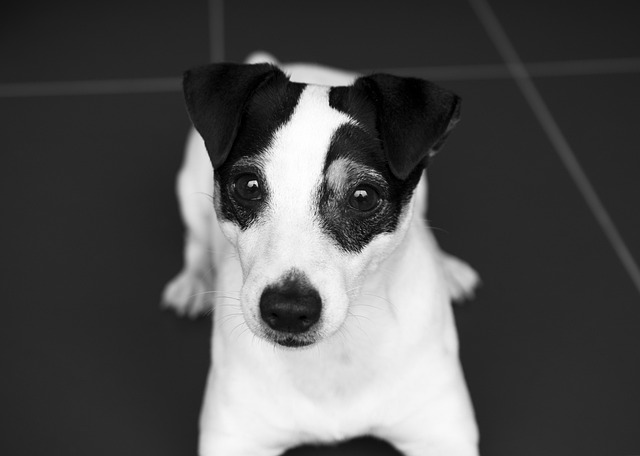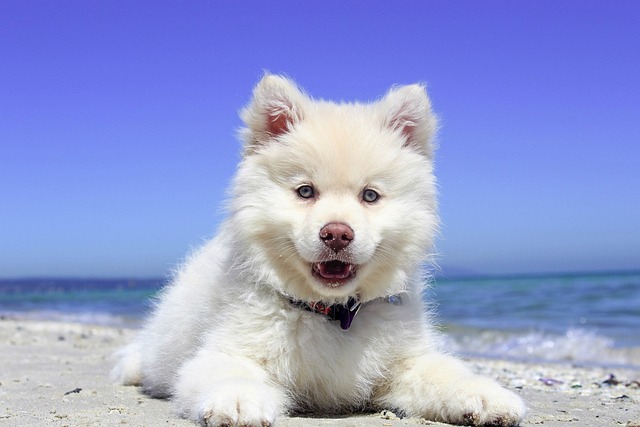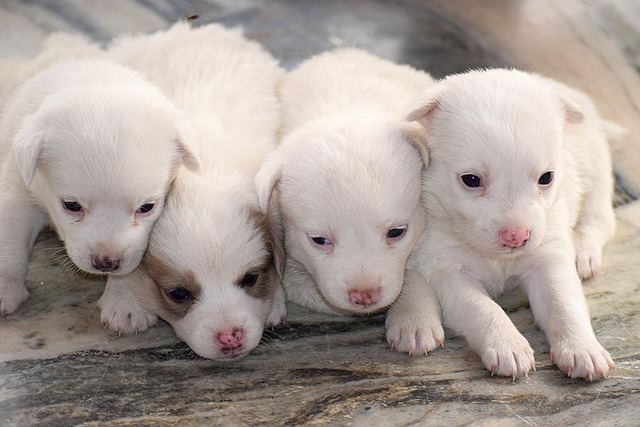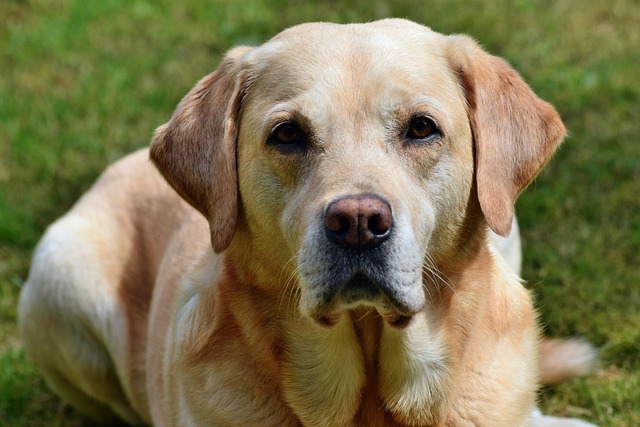
How to train a 2 month old puppy to pee on a pad?
Got a new 2 - month - old furball bounding around your place? The excitement’s real, but so’s the challenge of potty training. Trust me, I’ve been there.
Teaching your dog to scent track taps into one of their most fundamental and extraordinary abilities – their sense of smell. It’s more than just a fun game; it’s a journey into your dog’s innate world, offering mental stimulation, physical exercise, and a profound way to strengthen your bond. Forget complex jargon or intimidating methods; successful scent tracking builds on patience, clear communication, and harnessing what your dog already knows instinctively. Here’s how you can guide them.
Start by recognizing the sheer power of your dog's nose. While we navigate the world primarily by sight, your dog experiences it through scent – a landscape rich with information invisible to us. Their olfactory system is millions of times more sensitive than ours. Scent tracking isn’t about forcing a new skill; it’s about channeling this natural inclination in a focused, rewarding way. Begin in a quiet, familiar, distraction-free environment indoors. Your living room or hallway is perfect. Have high-value treats your dog absolutely loves cut into tiny pieces, or a beloved toy ready as a reward. You’ll also need a specific scent article; an old cotton sock or small piece of flannel fabric works well. Imprint this article with your scent by carrying it in your pocket for an hour or so.
The very first step is creating a positive association between the scent article and something amazing. Let your dog sniff the article briefly, then immediately give them a treat or show the toy with great enthusiasm. Keep this interaction short and incredibly rewarding. Repeat this several times over a few short sessions. You’re teaching them, "This specific smell means good things happen!" Once they show visible excitement upon seeing or smelling the article – maybe a wagging tail, focused attention, or pawing at it – you’re ready for the next phase.
Now, introduce the concept of a short trail. With your dog out of sight (perhaps held by a helper or waiting in another room), take the scented article and drag it lightly along the floor in a very short, straight line – maybe just three or four feet. Place a few treats directly on the trail as you go, and leave the article at the end with several more treats piled around or on top of it. Bring your dog to the starting point, let them sniff the spot where the article was initially held, and use a simple, consistent cue like "Find it!" or "Track!". Use an encouraging tone. Allow them to follow the scent. Their nose will likely go down, and they’ll start moving. Don’t pull or guide them on the leash; let them work it out. Celebrate wildly when they reach the article and finds the treats. This immediate, huge reward at the source is crucial.
Gradually increase the challenge as your dog gains confidence. Make the trail a little longer. Introduce gentle curves instead of just straight lines. Start placing the treats less frequently directly on the trail and more concentrated near the article. Always start with the scent article at the beginning for them to get a good whiff before giving your cue. Keep the initial trails short enough that success is highly likely. Frustration is the enemy here; you want them to consistently experience the thrill of the find. If they lose the trail, calmly walk them back to the last point you know they were on it, let them re-orient, and encourage them again. Avoid re-scenting the trail midway, as this can confuse them about what scent they should be following.
 Moving outdoors is a significant step up in complexity. Start in a familiar, quiet area like your own backyard. The outside world is bursting with competing smells – grass, soil, other animals, the wind carrying scents from afar. Be prepared for your dog to be more distracted initially. Use a longer leash (10-15 feet) to give them freedom to work but maintain control. Lay the trail exactly as before: drag the scented article lightly along the ground, place treats sparingly on the trail and abundantly at the end with the article. Walk the trail yourself only once, right after laying it, to minimize contaminating it with your own fresher footprints. Keep these first outdoor trails very short and simple, maybe just across the lawn. Patience is paramount. Reward success even more enthusiastically outdoors to overcome distractions.
Moving outdoors is a significant step up in complexity. Start in a familiar, quiet area like your own backyard. The outside world is bursting with competing smells – grass, soil, other animals, the wind carrying scents from afar. Be prepared for your dog to be more distracted initially. Use a longer leash (10-15 feet) to give them freedom to work but maintain control. Lay the trail exactly as before: drag the scented article lightly along the ground, place treats sparingly on the trail and abundantly at the end with the article. Walk the trail yourself only once, right after laying it, to minimize contaminating it with your own fresher footprints. Keep these first outdoor trails very short and simple, maybe just across the lawn. Patience is paramount. Reward success even more enthusiastically outdoors to overcome distractions.
As your dog masters short outdoor trails, begin refining the process. Introduce the concept of a "cold trail." Instead of laying the trail and immediately running it, wait 5, then 10, then 15 minutes before starting. This allows the scent to age and disperse slightly, making it more challenging and realistic. Start using different surfaces – from grass to dirt paths, or even gravel (though harder surfaces are more challenging as scent doesn’t linger as well). Begin to phase out the treats placed on the trail entirely, relying solely on the jackpot reward at the end with the article. Your cue and your excited praise when they find it become increasingly important rewards themselves.
Pay close attention to your dog’s body language; they are constantly communicating. A dog locked on a scent trail will typically have their nose down, moving with deliberate focus, often with a rhythmic breathing pattern. Their tail might be held high and wagging steadily, or rigid with concentration. Learn to read these signs. If their head comes up, they start circling aimlessly, or seem distracted, they’ve likely lost the track. This is when your calm redirection back to the last known point is essential. Avoid the temptation to constantly talk or encourage while they are actively tracking; let them concentrate. Your voice can pull them out of their scent-focused state. Save the big praise for the successful find.
Consistency in your training sessions is vital, but so is keeping them positive and relatively short – 10 to 15 minutes is often plenty, especially in the beginning. End on a success, even if you have to make the final trail of the session deliberately easy. This leaves them eager for next time. Remember that factors like weather significantly impact scenting conditions. Warm, humid, overcast days are often ideal as scent particles cling closer to the ground. Windy conditions can scatter scent, making trails harder. Very hot, dry weather can cause scent to dissipate quickly. Cold weather can make scent sink and linger differently. Adjust your expectations and trail difficulty accordingly.
Never punish your dog for losing a trail or getting distracted. This only creates negative associations with the activity. If they are consistently struggling, go back a step to an easier exercise where they can succeed. Some dogs progress faster than others; individual temperament, breed inclinations, and age play roles. The goal is enjoyment and partnership, not speed. Consider involving a helper to lay trails you don't know the exact path of – this adds a layer of challenge for you as the handler, as you must truly trust and follow your dog's nose.
Teaching scent tracking is a remarkable process of learning to see the world through your dog's nose. It cultivates patience in you and builds immense confidence and focus in them. It transforms walks into adventures and provides a deeply satisfying outlet for their natural drives. Start simple, celebrate every small victory, prioritize clear communication and positive experiences, and you’ll unlock a fascinating dimension of your dog’s intelligence and instinct, strengthening the unique connection you share one sniff at a time. The joy in their eyes when they successfully locate the source is a reward that goes far beyond any treat.

Got a new 2 - month - old furball bounding around your place? The excitement’s real, but so’s the challenge of potty training. Trust me, I’ve been there.

Picture holding a small clicker, unsure if it can really teach your pup to sit. Don’t worry—clicker training is simpler than it looks. Let’s walk through step-by-step basics that even total newbies can master, blending science with real-world puppy parent

Bringing a new puppy home is a whirlwind of excitement and chaos, but one of the most pressing challenges new pet parents face is getting that tiny furball to poo on command.

Picture pressing a small clicker, and your pup instantly sits—no tugging, no shouting. Is this method the key to stress-free training?

Picture your new pup darting across the park, chasing a butterfly while you shout their name in vain. Later, they jump on your aunt’s lap, spilling her iced tea—these aren’t just “cute puppy moments.”

Teaching your dog basic obedience isn’t just about showing off—it’s the foundation for a safe, trusting bond. Every pup learns at their own pace, so patience is your superpower here.